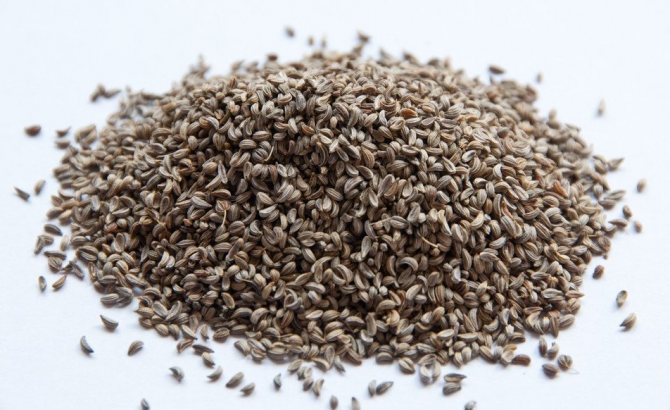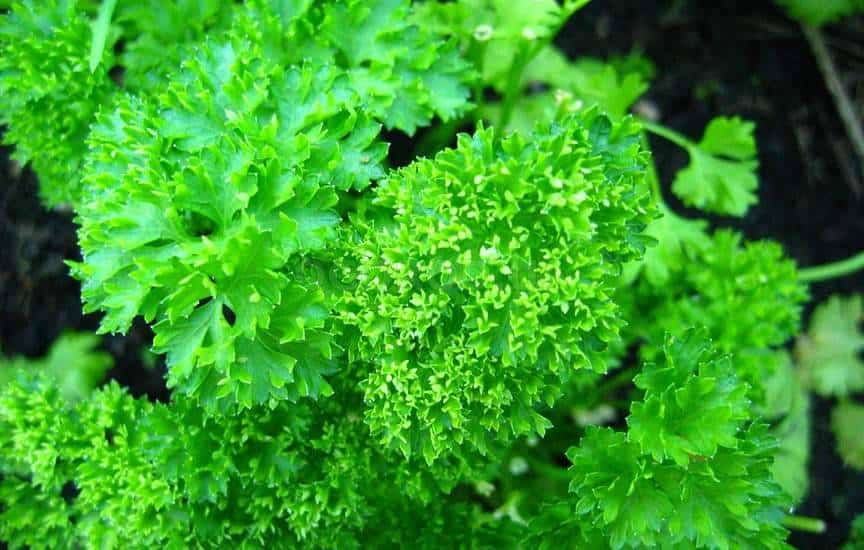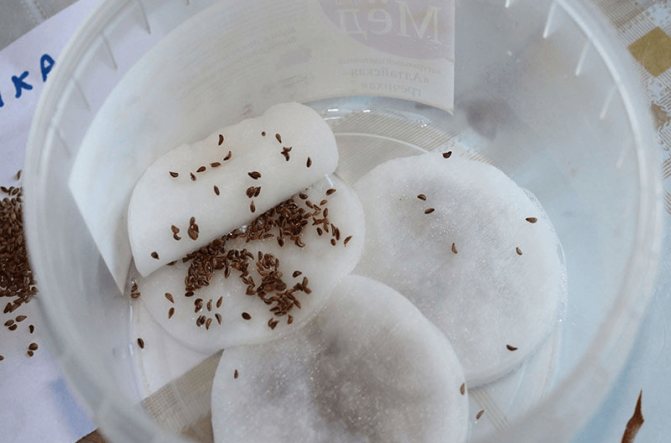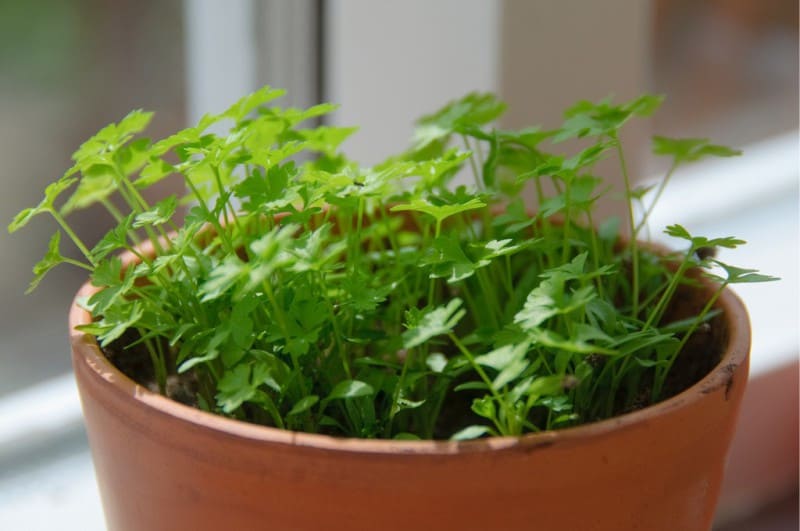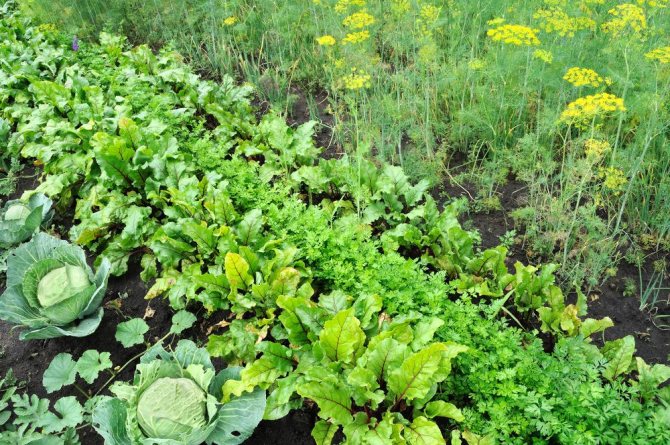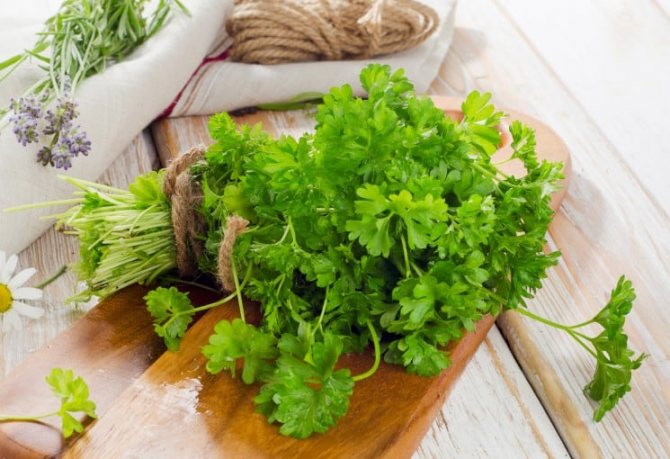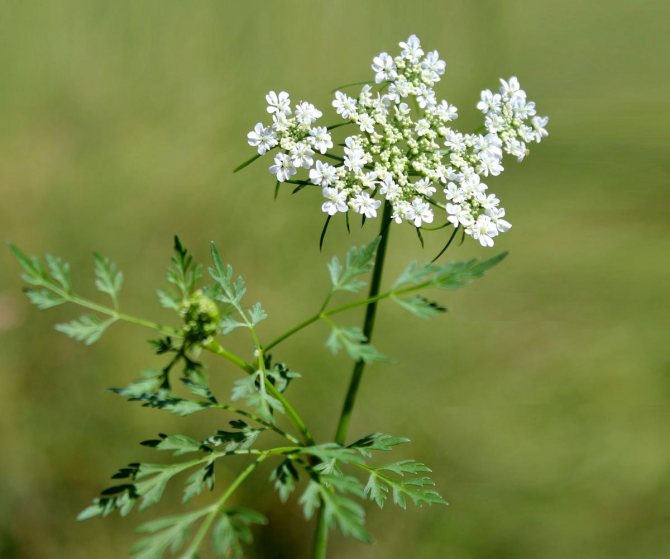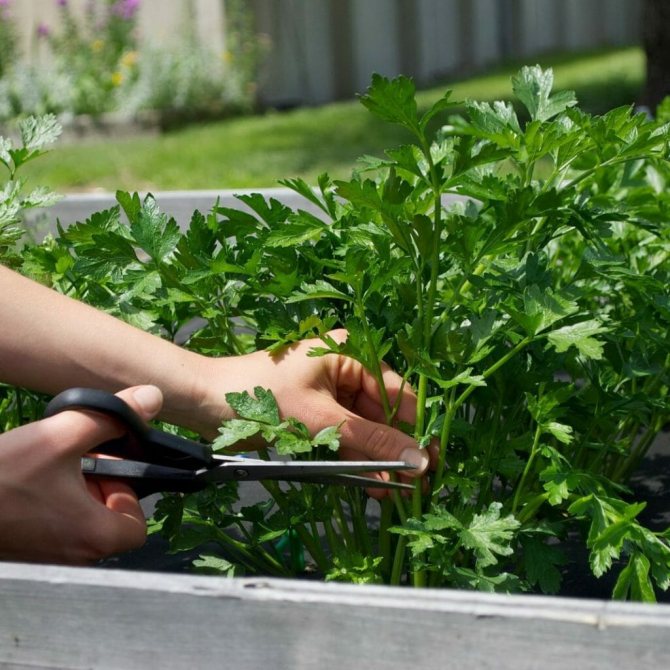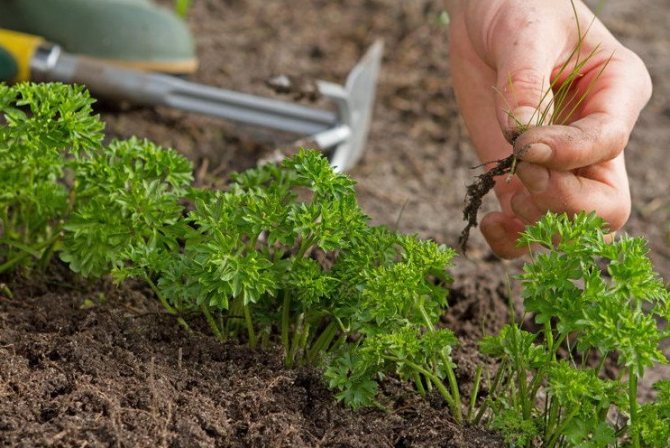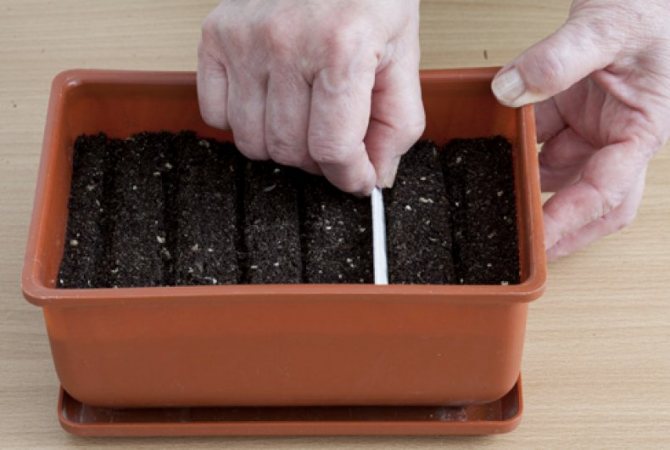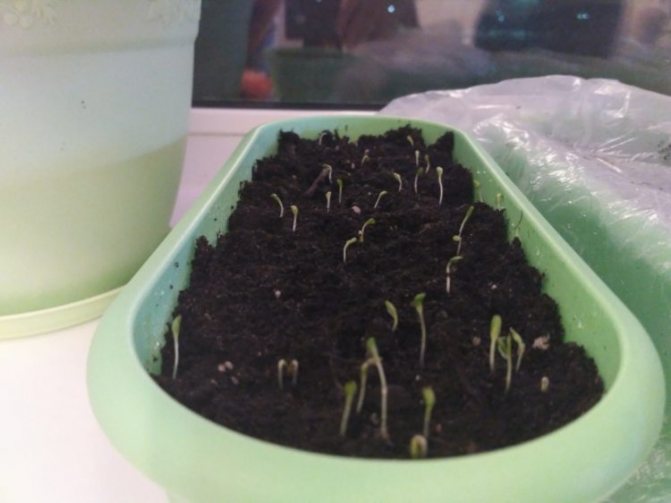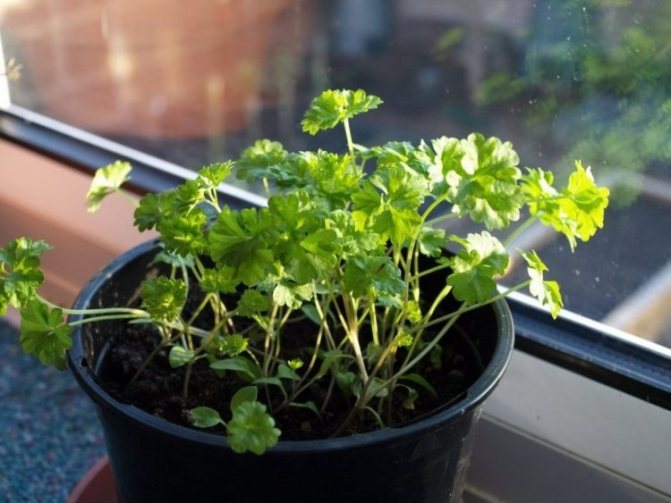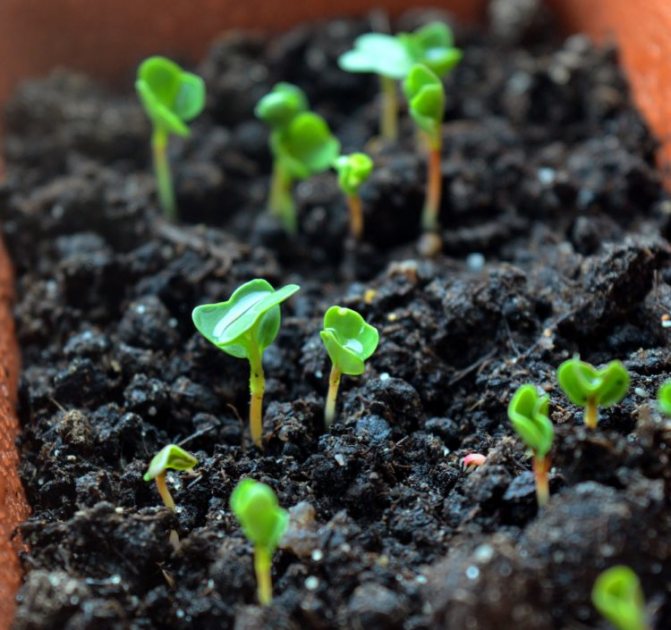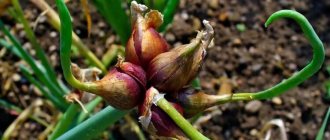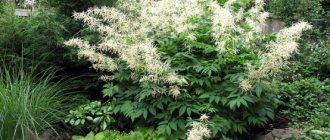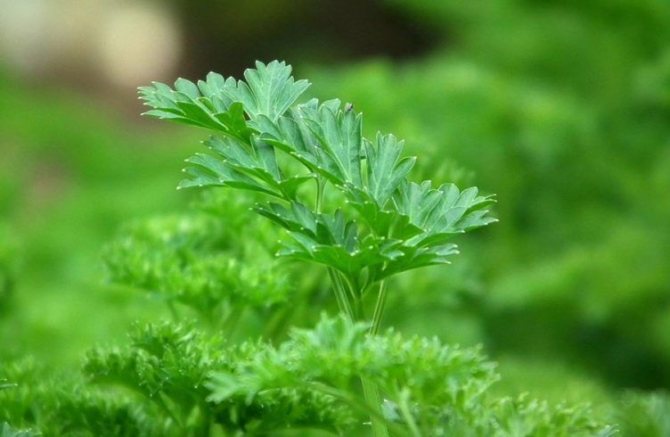
Who doesn't know parsley. It is a spicy vegetable culture. Differs in productivity, unpretentiousness and high consumer demand. Therefore, greens are grown all year round in the ground, greenhouse or flower pots. Read about how to organize a continuous harvest and the rules for harvesting parsley for the winter right now.
How to plant parsley on a windowsill at home
Planting and caring for root parsley is very simple, so even novice gardeners can grow it. But assuming she doesn't need care at all would be a mistake.
The culture belongs to biennial plants. After sowing, in the first year you will get fragrant greens, and in the second year - useful roots (Figure 1).
Features of the
For a plant, it is better to choose spacious, well-lit areas without drafts. It is undesirable to sow it in the beds where carrots, dill or coriander were previously grown. These crops share common diseases and pests that can reduce the quality and quantity of the crop.


Figure 1. Appearance of parsley root
If you plan to grow it for greens, it is better to buy ordinary or curly varieties. They form a lush tops, which are used for food. Root greens can also be cut, although they taste a little rougher. But it is not recommended to cut off almost all the tops, since in this case the root crop will be too small.
Requirements for the soil conditions of the crop are minimal. It grows well on any soil, but it is still advisable to dig up and loosen the ground in the fall.
Landing dates
Planting and care in the open field can be carried out at almost any time of the year, except for winter. This crop tolerates a drop in temperature and even autumn frosts well.
Note: The frost resistance of the culture allows it to be grown by conveyor belt method. For this, the first sowing is carried out in early spring, and then repeated after 2-3 weeks until late autumn. This will allow you to constantly get a harvest of fresh greens.
The garden bed is prepared in the fall: they dig up and apply organic fertilizers. In the spring, they are loosened again and supplemented with mineral dressings. It is possible to carry out podzimny sowing when the ground is already slightly frozen. The plot is covered with mulch and foil, and in early spring, when the snow has just melted, you can start cutting off the greenery.
Care rules
Growing greenery in the open field also presupposes a certain care of the crop. If you have sown root, it needs to be watered periodically (preferably in the evening). This will allow the root vegetables to gain more mass.
Periodically, the bed is thinned out and weeds are removed by weeding or loosening. For leaf thinning, you may not need to if you are constantly collecting fresh herbs from the garden.
Why seedlings do not appear
The spicy plant belongs to the Celery (umbrella) family; the seeds have a shell of essential oils. It makes it difficult for moisture to penetrate the material. That is why parsley does not sprout, and sprouting shoots above the ground appear slowly or may not hatch at all. Experienced gardeners are able to determine what needs to be done, these may be different circumstances.
| Poor quality seeds | Planting material was not purchased in a specialized store |
| Expired | Normal seed germination 3-4 years |
| Poor climatic conditions | It is not advisable to plant parsley in a cold bed. |
| Improper watering | Do not allow the earth to dry out |
| Insufficiently fertile land | There must be a sufficient amount of organic and mineral substances in the soil. |
So that there is no doubt about the quality of the planting material, you need to purchase from trusted manufacturers and pay attention to the expiration date.
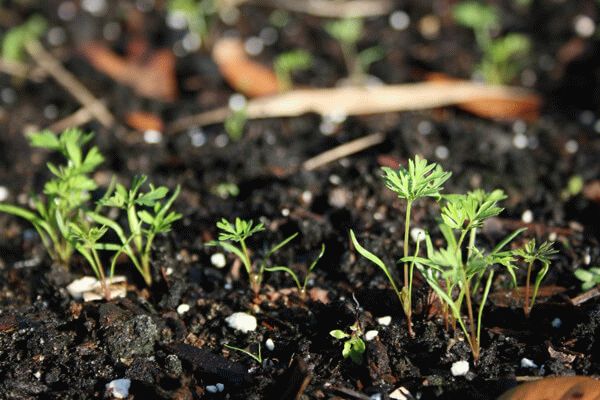

Parsley on the windowsill - growing from seeds
Growing root species on a windowsill from seeds is more difficult than in a greenhouse or open field. First of all, you need to choose the right place and container for planting (Figure 2).
Note: It is better to plant greenery indoors, rather than on a balcony or loggia. Large boxes or wide and deep flower pots are used as containers.
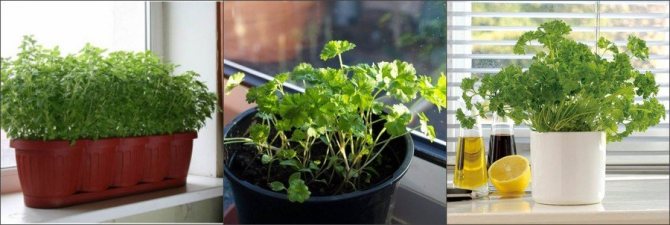

Figure 2. Examples of containers for growing greenery on the windowsill
After planting, vegetables are regularly watered (about once a week), and the room is ventilated to prevent drafts.
The author of the video will tell you how to properly sow a crop for growing on a windowsill.
https://youtu.be/CwPRbqdke2c
Varieties of parsley for growing on the windowsill
Almost any variety can be grown at home. But it is better to choose early maturing ones in order to get a harvest faster. When sowing such species, greens can be obtained about a week earlier than when planting mid-season and late species. Examples of varieties are shown in Figure 3.
Root sugar parsley
Sugar root crops grow best on fertile soils. On clay soil, the roots will be too branchy and inconvenient to store. The site should be well lit, but it is advisable to protect the garden from drafts.
How to speed up the germination process
As mentioned earlier, parsley rises slowly. This process can be accelerated at the stage of seed preparation by processing it. In addition, the use of a covering material (film or spunbond) in a crop bed will help speed up the appearance of sprouts. It will help to retain moisture in the soil, which is so necessary for the seeds to "start". You can also speed up the germination process if you water the garden with water at a temperature of + 38 ... + 40 ° C. How many days the shoots will appear depends on the ambient temperature.
Video: How to sow parsley
Parsley: planting and care in the open field
Before sowing, they dig up and fertilize the garden bed. By this time, the soil should warm up, so planting is most often carried out in early or mid-April.
Planting and caring for root and leaf varieties in the open field includes (Figure 4):
- On the prepared bed, shallow grooves are made, placing them at a distance of 15-20 cm from each other;
- After sowing, the seeds are sprinkled with a thin layer of earth and watered;
- Before the emergence of shoots, the site is covered with a film. This will not only accelerate seed germination, but also prevent moisture evaporation;
- When growing root varieties, the plants are fed several times per season. Leaf species do not require additional fertilization;
- Watering is required only when there is no rain. The soil should not be too wet, as in this situation the roots will begin to rot.


Figure 4. Sowing and caring for greens in the open field
Also, in the growing process, seedlings are periodically thinned out. This requirement is especially important for root varieties, since the leaf is periodically cut for fresh consumption.
About culture
Parsley (Petroselinum crispum) is a two-year vegetable crop cultivated in the subtropical and temperate climatic zone. The cultivation of leafy varieties is also possible in the northern regions. In the wild, the plant is found in the coastal zone of Mediterranean countries.
Parsley is used as a spice and for medicinal purposes, it is used fresh, dried or frozen. It is also grown for decorative purposes.
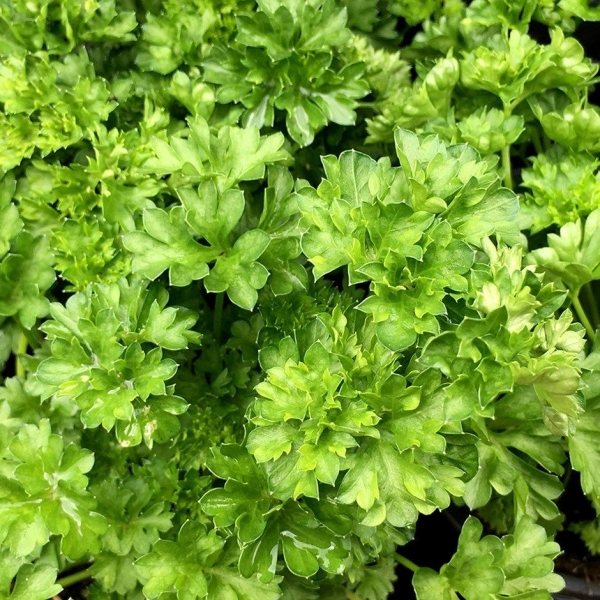

Externally, the culture is a bunch of feathery dark green leaves that grow up to 30 cm in height. It blooms and bears fruit-seeds in the second year of life, after which the growing season stops.
Growing parsley in a greenhouse
Growing parsley in a greenhouse will give you fresh greens even in winter. In addition, there is much more space in the greenhouse than on the windowsill.
Due to its resistance to cold weather, sowing begins in January. But this applies only to heated premises. In a greenhouse without heating, the last crop is harvested in December, and the new one is sown not earlier than March.
Growing greens in a greenhouse is carried out according to the following rules (Figure 5):
- Equipped with artificial lighting to extend daylight hours. This accelerates the growth of seedlings and activates the formation of green mass;
- Watering is carried out as the topsoil dries up. As a rule, the soil is moistened after the next cut of greenery;
- The humidity should be at least 75%, and the temperature should be 12-15 degrees. If this figure is higher, the leaves will begin to wither;
- Ventilation is periodically carried out, but at the same time drafts and sudden temperature changes should not be allowed.
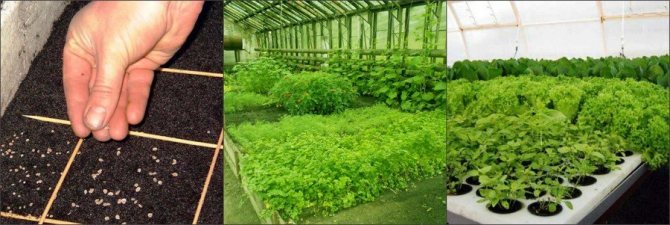

Figure 5. Methods for growing in a greenhouse
Almost any primer can be used. But, if possible, preference should be given to moderately fertile light soil.
Is the method suitable for root and leaf varieties?
Important! Seedling parsley is more suitable for leafy greens.
Experienced gardeners do not recommend cultivating root plants in this way. There is a high probability of root damage when transplanted into the ground. As a result, ugly branched roots can be obtained. The whole difference lies in the adaptation of the root system to a new planting site, even with small damage this will be problematic.
You can, of course, try the careful handling of seedlings together with the soil layer, this is the only option that is suitable for such cultivation without disturbing the root system of the seedlings. But this is difficult to do. Root varieties are more used for winter plantings, they are much more effective.
Growing parsley in the garden
Compared to growing in a greenhouse or in a vegetable garden, forcing greens in a vegetable garden is much easier. To do this, it is enough to dig up and fertilize the garden with organic matter in the fall, and loosen it again in the spring, applying mineral fertilizers.
Pre-soaked seeds are sown in shallow grooves, sprinkled on top with a small layer of soil, lightly watered and covered with foil. When the first shoots appear, the film is removed. As the greenery grows, the plants are periodically thinned out. You can also apply top dressing, and when the soil dries up, you can water it in the evening with water at room temperature.
It is recommended to sow in several passes, after about 3 weeks. This way you will be constantly harvesting fresh greens until late autumn.
Parsley picking
The leafy parsley is cut gradually as it grows. With the onset of autumn cold weather, you can cut off all the leaves, grind them and store them frozen or dried (Figure 6).
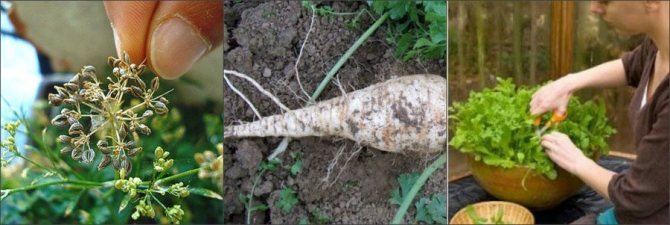

Figure 6. Collection of seeds, roots and parsley
Root crops are harvested a few days before the onset of stable autumn frosts. Some roots can be left in the ground to get fresh greens in early spring. Root vegetables are cleaned of tops and stored in a cool, dark place with good ventilation.
Things to Remember
- Seed preparation... Choose a suitable method and prepare the seeds before spring planting or seedling.
- When to plant... In the spring they are planted at a soil temperature of 6 ° C, in the fall 2 weeks before the first frost, and the seedlings are planted in trays a month before planting in the ground.
- Planting depth of seeds... For seedlings and in spring, the seeds are buried 1 - 2 cm.Winter parsley is buried 5 cm.
- Disease prevention... In early spring and autumn, you need to shed the beds well with Bordeaux liquid.
Parsley seeds: benefits and harms
The leaves, seeds and roots contain many vitamins and nutrients. Regular consumption of this plant strengthens the immune system, stimulates metabolism and lowers blood pressure. The essential oils contained in the seeds are used to treat joint diseases and eliminate inflammation. In addition, fresh greens perfectly removes toxins and toxins from the body.
However, eating greens can also harm the body. For example, when buying greens in a store, you do not know about their origin. Therefore, to eliminate possible harmful impurities, greens must be soaked in water for several hours. An overdose of parsley seed essential oils can cause nausea and dizziness.

